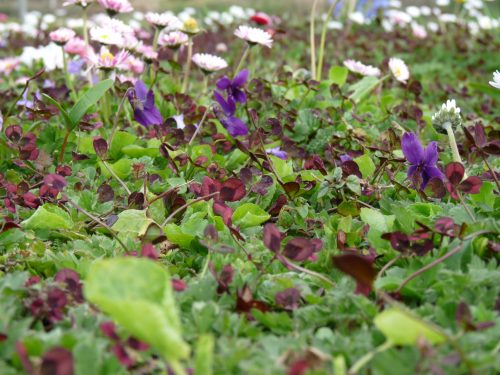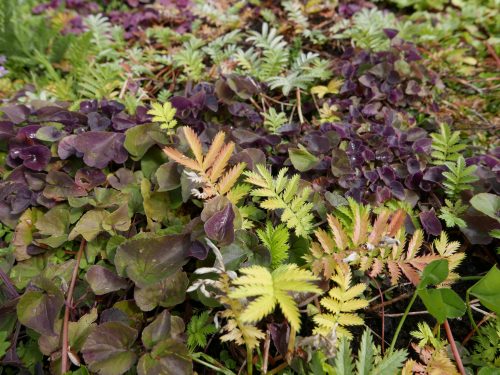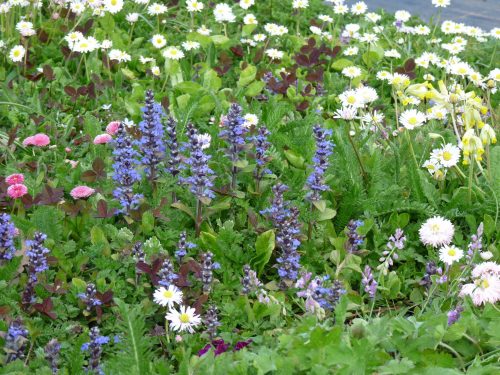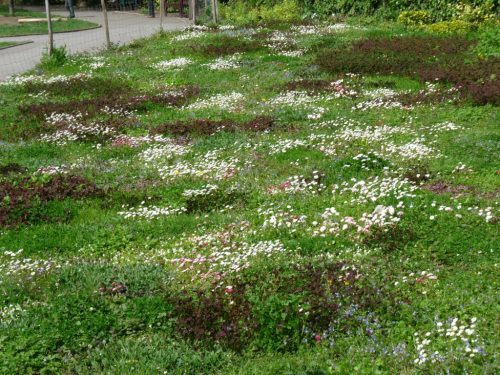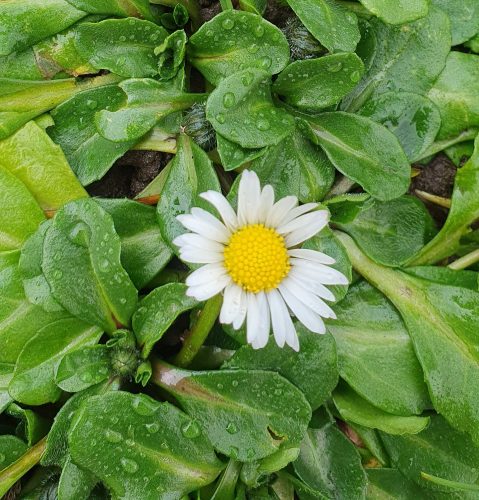Tapestry lawns are lawns created with flowering plants, not grass seed or rolled turf.
Tapestry lawns are:
1. INNOVATIVE
'Tapestry' because of the weave of the many different plants, and 'Lawn' because they are kept low by mowing.
Started without grass, T-lawns are the opposite side of the coin to traditional monoculture grass-only lawns.
Floral, scented, and walkable, T-lawns are a combination of well-researched and time-tested plants that can lift lawn biodiversity and create lawn spaces that can be both beautiful and functional.
2. MORE SUSTAINABLE
T-lawns are only rarely mown more than eight times a year, never need fertiliser, scarifying or aerating and can stay greener for longer than turf during short periods of drought.
That is around two thirds less annual mowing and associated CO2 emissions. No nitrogen leaching or NO2 emissions associated with fertiliser use, and less management overall.
3. FULL OF POLLINATOR-FRIENDLY PLANTS
Unlike grasses, T-lawn forbs offer nectar and pollen to foraging pollinators such as bees, hoverflies, butterflies, and moths.
Together they can also act as an improved habitat to other insects and invertebrates compared to traditional grass lawns, and be food plants to many garden species.
SHOCK! A grass-infested tapestry lawn.
This 9-year-old T-lawn was unfortunately untended for nearly 2 years, just getting mown with the same frequency as all the other grass lawns nearby.
Walked over repeatedly most school days, splashed by car and bus tyres, and even driven over and used as a built-upon base for a temporary event, it had some grasses creep in. Nevertheless, it shows just how floral even a largely unmanaged T-lawn can be.
Lots of summer-flowering British native species showing in this one. It only needed mowing five times in 2024, in May, June, August and October.
To view on YouTube, click HERE.
To find out more about Tapestry lawns click on the About section at the top of the page, or alternatively click HERE

